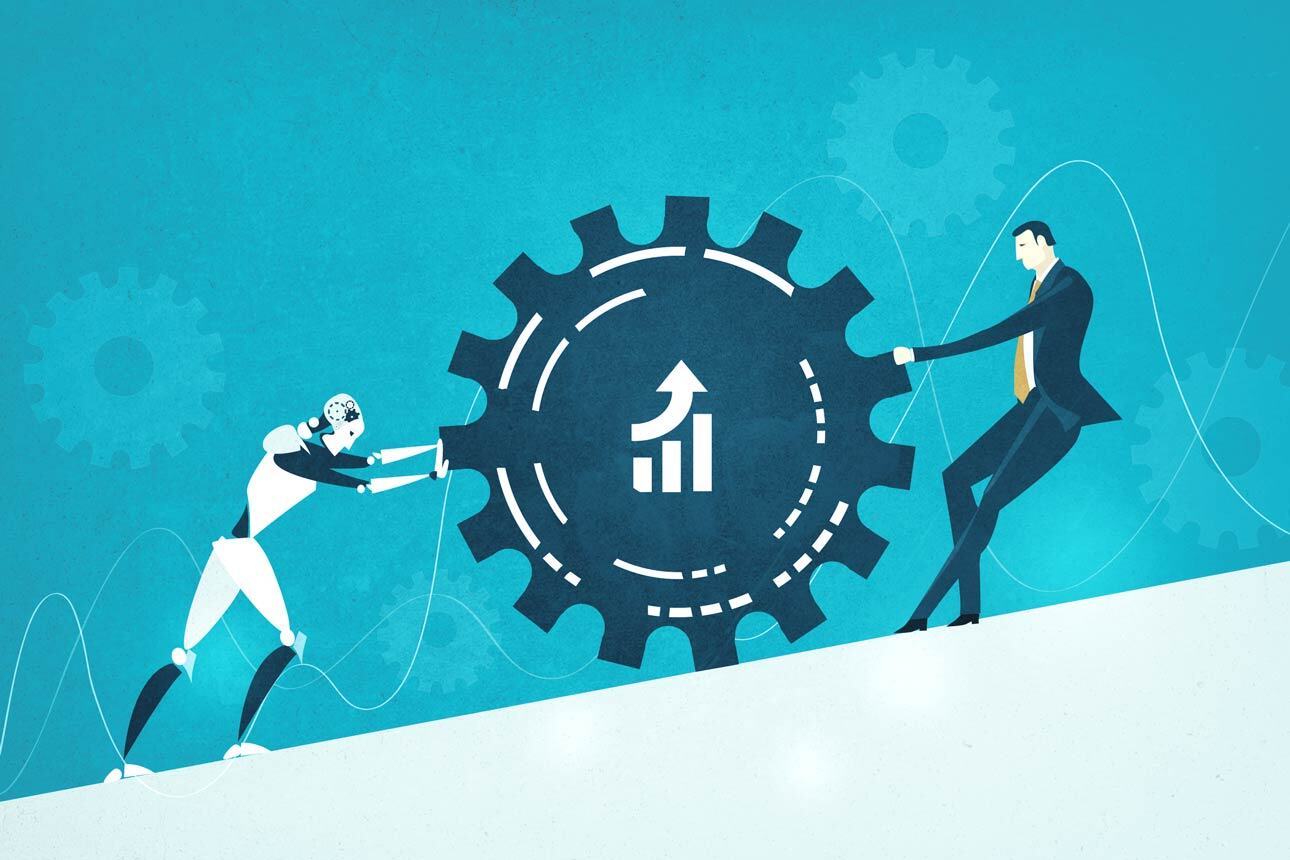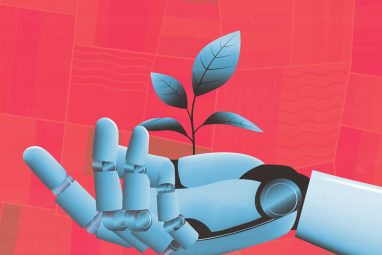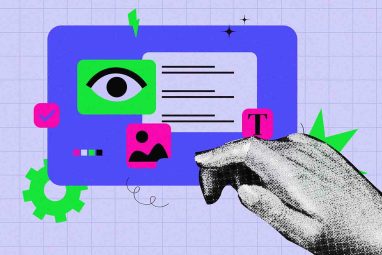AI's Role in Business Transformation: Overcoming Challenges and Driving Growth
Experts emphasize the importance of continuous learning and adaptation as AI becomes more integrated into businesses.
News
- ServiceNow to acquire cybersecurity startup Armis for $7.75B
- UAE introduces federal law to regulate child safety across digital platforms
- Middle East Has a Competitive Advantage as a Data Center Powerhouse, Says BCG
- CBD Becomes the UAE’s First Bank to Go Live Under the Open Finance Framework
- Will Halt Potential Rogue AI Systems, Says Microsoft AI Chief
- Google Bets Big on Data Infra With a $4.75B Deal in Intersect

[Image source: Krishna Prasad/MITSMR Middle East]
AI is revolutionizing the business landscape, empowering leaders to make smarter decisions and enhance customer experiences.
But getting it right isn’t always straightforward. Successful implementation requires more than just adopting the tech—it’s about strategic integration and overcoming the challenges that come with it.
The MIT Sloan Management Review Middle East’s “Tech Leaders Lab,” in collaboration with Uniphore, provided executives with a unique opportunity to explore the “what,” “why,” and “how” of AI. Through expert insights and discussions, participants discussed strategies to leverage AI effectively and drive meaningful business outcomes.
AI: Redefining Organizational Efficiency
Starling Hunter, Former Professor, at the Massachusetts Institute of Technology – Sloan School of Management, began his keynote by addressing the current state of AI, bureaucracy in organizations, and the potential for transformative business changes—touching on issues from excessive bureaucracy to the scalability of AI solutions.
He gives an example of how the head of research at Goldman Sachs expresses skepticism about AI’s transformative potential, highlighting that no killer application (or “killer app”) has emerged. This echoes broader concerns about the massive capital investments in AI and the uncertain returns, especially in the absence of significant automation in high-level jobs. The question remains: will AI automate routine tasks, or can it generate actual productivity improvements across various business areas?
Musk’s drastic restructuring of Twitter, now known as X (cutting 80% of staff), and his approach at Tesla (encouraging direct communication across all levels of the company) are examples of breaking down bureaucracy. While effective in certain cases, these methods aren’t universally applicable, as most organizations don’t have Twitter’s bloated staff or the same level of flexibility.
The challenge lies in scaling solutions that cut bureaucracy. While some solutions work for individual companies, such as Musk’s or Bezos’s, they only scale across some organizations. Reducing bureaucracy often leads to job burnout and issues with team dynamics, adds Hunter.
He believes AI’s biggest opportunity could be transforming organizations’ internal information environments, similar to how Google transformed the global information environment. He says, “This could involve streamlining communication, knowledge-sharing, and decision-making across organizations—turning AI into a tool that not only automates but also redefines how work gets done.”
AI can go beyond traditional network mapping by identifying who should talk to whom within an organization. It can suggest new connections, break down communication barriers, and improve collaboration across departments and hierarchical levels.
Hunter believes, “Using AI to visualize how information flows in an organization can highlight important connections and potential gaps. This includes mapping relationships beyond the formal reporting lines, such as who people seek out for information.”
The process involves starting with an organizational chart and asking employees who they report to and who they seek for information. AI can then analyze this data, identify existing connections, and recommend new ones based on patterns.
He adds, “AI could automate identifying communication gaps and suggesting improvements at scale. This can reduce bureaucracy, streamline decision-making, and enable more effective use of employee expertise.”
Hunter is exploring AI’s potential in transforming organizational information flow, mainly focusing on where AI chatbots will fit into networks and how they may alter these processes.
He emphasizes AI’s role in democratizing access to information across departments, reducing the time spent searching for data. While uncertain about AI’s exact position within organizations, he acknowledges that its role will evolve.
Regarding cultural and organizational challenges, Hunter points out that family-owned businesses dominate in regions like the GCC, where hierarchical structures and familial ties complicate decision-making, and communication tends to be top-down.
AI, particularly generative AI, could help move organizations away from rigid “nodes-on-a-graph” models by focusing on how information flows rather than adhering to traditional roles.
He also stresses the importance of dynamic modeling to capture how organizations evolve, cautioning against over-focusing on individual traits that may distract from understanding the overall network flow. Finally, he suggests that competitive necessity, rather than internal reforms, will likely drive cultural and legal changes in organizations, urging a focus on how networks operate to stay competitive.
AI: Evolving Role in Business Strategy
Mamoun Alamouri, Regional Vice President, MEA, Uniphore, shares his thoughts from a book named ‘Culture Map’ and highlights the contrast between hierarchical, centralized decision-making (common in Eastern cultures) and more agile, decentralized decision-making (common in Western cultures). Both systems have their strengths, with centralized decisions being faster but potentially less flexible.
This concept refers to the tendency to stop paying attention when we think we already know something. Alamouri emphasizes continuously listening and differentiating between intellectual knowledge and practical application. He adds, “There are seven levels of knowing, from intellectual understanding to mission-driven identity, and it’s crucial not to disengage too early.”
He goes on to discuss some more books like ‘The Sovereign Individual’ and ‘The Fourth Turning’, which predict shifts in power from the West to the East over time. The rise of AI and decentralized systems (like cryptocurrency) are catalysts in this transition, he adds.
AI, in particular, is reshaping economies and industries, pushing towards more decentralized, democratized models of organization and governance.
In the future, governments may evolve into service-driven organizations, focusing more on providing services than governing in traditional ways. Alamouri says, “This aligns with the broader trend of decentralization and the rise of individual sovereignty, empowered by technologies like AI and blockchain.”
Alamouri outlines the evolving role of AI in organizations and its influence on decision-making, customer experience, and business strategies. They reflect on their career and how technology decisions have shifted, from IT-focused to business-centric and now to a more balanced pendulum where IT and business leadership share responsibility. They emphasize how the decision-making process, particularly around AI, has moved from tactical “fear of missing out” (FOMO) to “fear of messing up” (FOMU), highlighting a more cautious approach to AI adoption and experimentation.
The conversation turns to AI’s growing influence on customer experience, noting how early adoption was often fragmented (e.g., separate chatbots for different channels). This has evolved into multi-bot strategies, where multiple AI systems work together, creating a more integrated experience. Alamouri predicts the next evolution in AI will be the development of an “Omnipot”—a unified AI system that can be deployed across all channels, enhancing customer service and operational efficiency.
Alamouri also reflects on how AI systems like chatbots and voice assistants have matured, offering more than simple automation. He adds, “The focus is now on creating platforms that support omnichannel AI experiences that can manage and learn from customer interactions in real-time. This advanced AI can help businesses by analyzing customer data, monitoring sentiment, tracking promises made during interactions, and driving improvements through after-call automation.”
He delves into his company’s approach to AI by developing an Omni AI platform, which integrates multiple AI capabilities into a single system. “The platform is flexible, allowing organizations to gradually scale AI adoption—from analyzing conversations to full customer interactions.” Additionally, the company has verticalized its approach by tailoring AI models to specific industries, enabling quicker and more impactful value delivery.
Alamouri also introduces the concept of “small language models” (SLMs) tailored to specific industries, contrasting them with generalized large language models (LLMs) like ChatGPT. “Unlike LLMs, which can veer into unrelated topics, SLMs are fine-tuned to handle focused, structured interactions relevant to particular sectors.”
A significant breakthrough is AI’s capacity for real-time biometric and psychometric monitoring, analyzing customer emotions and engagement levels, and offering live feedback to sales agents. This adaptability opens doors for use cases in legal compliance, real-time customer service optimization, and broader organizational applications. The overarching message is that AI, especially as it integrates across departments, must evolve from isolated functionalities to holistic platforms that deliver real-time, organization-wide intelligence and efficiency.
The shift from tactical, isolated AI implementations toward a more strategic, holistic approach that integrates AI into the broader organizational fabric helps companies optimize performance and enhance customer experience.
Navigating AI Integration
Implementing AI presents organizations with challenges from data integration to training and change management. Success hinges on a strategy that tackles technical and human aspects, enabling smoother adoption and greater long-term impact. By addressing these hurdles directly, businesses can more effectively integrate AI into their operations.
During the “Breaking Barriers: Navigating the Challenges of AI Integration in Business” session, experts discussed practical approaches to overcoming these challenges, highlighting strategies to streamline implementation and maximize AI’s benefits across organizations.
“We live in a very blessed country with a strong economy,” says Alamouri. “However, when we look at the global situation, the contrast is stark.”
Statistics reveal that around 28% of people worldwide live without a roof over their heads. Approximately 58% are living in extreme poverty, and about 80% work tirelessly just to put food on the table. These figures paint a sobering picture of a world where the majority face significant struggles.
He adds, “If we consider replacing jobs with AI, there’s a philosophical angle to it. If AI were to take over 80% of these jobs, the cost of services could potentially approach zero. This raises another point: if we find renewable or free energy sources, the cost of goods could also become almost zero.”
In such a scenario, the need to work or perform certain jobs diminishes. However, replacing jobs should not be confused with replacing humans. While AI or automation may replace jobs, it does not replace the human essence that drives those jobs.
The challenge is the transition – the chaos we need to navigate. Ultimately, replacing jobs could be a good thing, but it requires careful thought and a moral approach.
During the discussion, Dr. Jassim Al Awadhi, Digital Transformation Principal at Du, highlighted the importance of setting realistic expectations for AI and digital transformation projects. He pointed out that while AI tools are highly promoted, they are not a one-size-fits-all solution. Instead, they should be seen as specialized tools for specific applications within departments such as legal, customer service, or retail. For successful implementation, organizations must ensure that their data is clean and structured and that employees across all levels are upskilled to understand AI and its operations.
“The need for continuous learning and refinement is essential, as AI outcomes often require adjustments and reinforcement,” explains Awadhi. He also touched on the cultural impact AI can have within organizations, especially regarding fears around job loss. He advocated for clear communication from executive management to alleviate these concerns, emphasizing that AI is intended to enhance productivity rather than replace jobs.
Meanwhile, Haaris Hasnain, Director New Businesses, Majid Al Futtaim shared insights from his role at MAF, where he has witnessed numerous proof-of-concept (POC) projects for AI, many of which remain stagnant at the pilot stage. He noted that AI’s commercialization, particularly in retail, has become more feasible, with in-house technologies being developed and offered to other industries. He says, “Organizations should adopt a service provider mindset, focusing on creating scalable solutions and building partnerships with complementary service providers. This approach allows for a fair market entry and ensures the integration of crucial capabilities, like customer service and data privacy.”
Adnan Naseem, Head of Strategic IT Portfolio (Customer) at Emirates, reflected on the rise of generative AI, particularly in industries like aviation and travel, where it has revolutionized customer personalization and operational efficiency. While generative AI may not have lived up to all its transformative hype, its practical applications in areas like hyper-personalized travel concierge services and disruption handling in aviation have proven immensely valuable. “AI’s ability to handle complex situations, such as flight cancellations, and provide immediate, tailored solutions highlights its growing potential across industries,” explains Naseem.
Awadhi also emphasized that AI is designed to augment employees’ productivity, not replace them. He used the example of ChatGPT, explaining that while the tool can help organize thoughts and provide information, it still requires users to have critical thinking skills to evaluate its outputs. This highlights the importance of training employees not to blindly trust AI’s results but to critically assess and reinforce them when necessary. He also referred to reinforcement learning, where an AI tool improves over time through corrections. On the idea of AI replacing jobs, he agreed with the notion that AI will not replace those who learn to use it, but rather those who do not embrace it.
Naseem added to the conversation, noting that AI is seen more as an augmentation tool than a replacement.
He referenced his MIT executive course, where it was emphasized that AI can replace individuals who fail to use it effectively, but it cannot replace those who are properly trained. For Naseem, the key is upskilling employees to use AI to enhance productivity and efficiency. He believes, “The goal isn’t to reduce headcount but to empower the same workforce to deliver more with AI’s capabilities.”
He suggested that AI can enable organizations to “do more with the same” by optimizing processes and improving outcomes without reducing the number of employees.
Hasnain, however, challenged the view, suggesting that AI’s impact should be thought of in terms of functions rather than individual jobs. For example, tasks like driving may be automated by AI, rendering the job obsolete, but not necessarily the individual. “Historically, new technologies have automated certain functions, which has sometimes made specific jobs less relevant, but ultimately driven progress.”
Haaris also highlighted a cultural concern, sharing a story of an executive who sought to automate a quality control process in a call center, fearing that the AI project would make his job irrelevant. He questioned the approach where ROI is measured by headcount reduction, warning that this can hurt company culture and productivity in the long run.
Naseem agreed with Hasnain, stressing that focusing on headcount reduction can have detrimental effects, both culturally and in terms of productivity. He argued that instead of laying off employees, organizations should leverage their existing talent by upskilling them to work with new technologies. Knowledge and experience should be used to enhance AI tools, creating a synergy that maximizes both human and technological potential.
Awadhi emphasized that AI is designed to augment employees’ productivity, not replace them.
He used the example of ChatGPT, explaining that while the tool can help organize thoughts and provide information, it still requires users to have critical thinking skills to evaluate its outputs. This emphasizes the importance of training employees not to blindly trust AI’s results but to critically assess and reinforce them when necessary.
He also referred to reinforcement learning, where an AI tool improves over time through corrections. Regarding the idea of AI replacing jobs, Awadhi agreed that AI will not replace those who learn to use it but rather those who do not embrace it.
Naseem added to the conversation, noting that AI is seen more as an augmentation tool than a replacement. For Naseem, the key is upskilling employees to use AI to enhance productivity and efficiency. The goal isn’t to reduce headcount but to empower the same workforce to deliver more with AI’s capabilities. He suggested that AI can enable organizations to “do more with the same” by optimizing processes and improving outcomes without reducing the number of employees.
Hasnain challenged the view, suggesting that AI’s impact should be considered in terms of functions rather than individual jobs. For example, tasks like driving may be automated by AI, rendering the job obsolete but not necessarily the individual. Historically, new technologies have automated certain functions, which has sometimes made specific jobs less relevant but ultimately driven progress.
Throughout the discussion, experts emphasized the importance of continuous learning and adaptation as AI becomes more integrated into businesses. The shift from isolated, tactical AI applications to more strategic, holistic platforms is key to improving operational efficiency and customer experience.
The experts were part of the MIT SMR CONNECTIONS thought leaders briefing “Tech Leaders Lab,” in collaboration with Uniphore. At MIT SMR Connections, we explore the latest trends in leadership, managing technology, and digital transformation.








